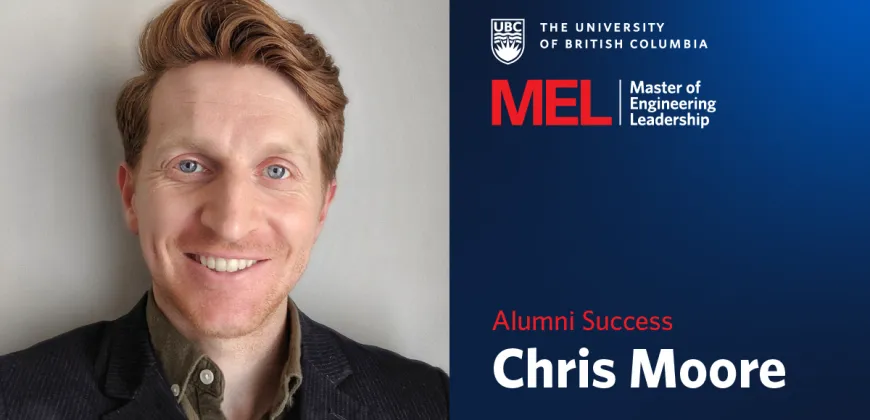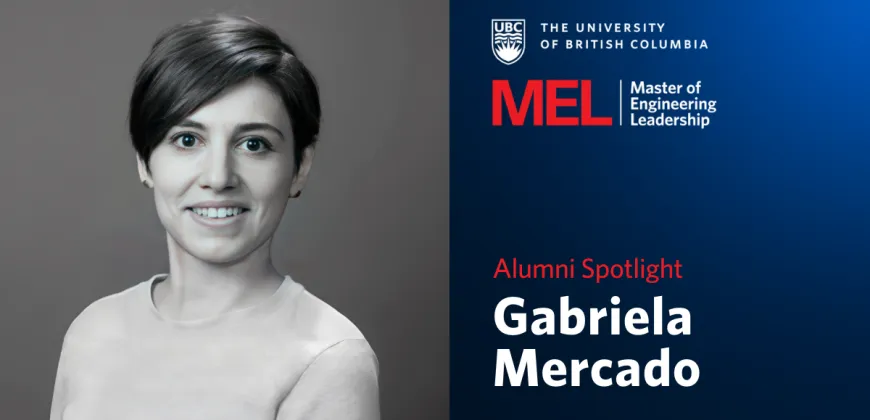Alumni Spotlight: Chris Moore
Chris Moore significantly altered his career path after completing the one-year MEL in High Performance Buildings degree, and he’s now working in a new area more aligned with his interests and values.

After graduating with a degree in mechanical engineering from the University of Calgary, Chris Moore spent two years teaching English in Japan and then worked in the marine industry, where he specialized in HVAC design for ships. He was an engineer in training on the design team for an offshore fisheries science vessel for RH Marine in North Vancouver, and worked in Germany as an engineering project manager for AERIUS Marine, providing engineering-based customer-specific marine HVAC support options.
“I felt like my career was taking a path I hadn’t fully intended,” he says. “So I decided to shift it in a direction that would be better for me and, hopefully, better for the world.”
While he considered applying for jobs in a different field, when he learned about the MEL in High Performance Buildings he saw an opportunity to build on his expertise in mechanical engineering and gain the specialized skills to make a career move.
“I saw this program as a stepping stone to doing climate-related work or contributing to energy-efficiency initiatives in areas that could have the positive impact the world needs.”
Collaborative courses and multidisciplinary perspectives
Students in the High Performance Buildings program complete two capstone projects. In 2020, the first project asked students to propose options for greening the UBC Engineering Student Centre, a two-storey wood-frame building completed in 2015, and the second that modelled and optimized energy performance in a Passive House childcare centre, based on an existing project in Vancouver.
“The two capstone courses were very valuable,” he says. “They were based on real-world design processes, and we were challenged to explore options, discuss trade-offs and determine what’s possible within a specific budget while still striving for green goals. In industry, engineers and architects work hand in hand, but in school they are usually segregated into separate programs and faculties. It was a great experience to work alongside and learn from professionals with design and architecture backgrounds.”
Chris says a favourite course was on regenerative design, which looks at how buildings can have compounding positive effects in a community. “It’s optimistic thinking of how buildings can positively affect their inhabitants and environment, while broadening how we might measure impacts and building performance,” he says. “It can be as simple as a community space in an apartment building that brings people together or as complex as harmonizing a building with the natural and cultural environment surrounding it. It’s thinking about how buildings are actually used and how to amplify the good things that might already occur in and around them.”
About half of the courses in the MEL are offered through UBC Sauder’s Robert H. Lee Graduate School, and Chris says that these classes on business and leadership gave him greater insight into organizational decision-making and effective communication, skills he’s putting to use in his new position.
A new role in climate action policy
Chris is now working as a corporate climate action analyst with the Capital Regional District on Vancouver Island. He’s responsible for co-ordinating the district’s corporate climate action program, which includes developing a policy framework, initiating implementation strategies for emissions, reductions, and liaising with internal stakeholders to incorporate and influence climate-oriented decision-making.
“This is not necessarily where I expected to end up when I started the program,” he says. “With my engineering mindset I was picturing a straight track – envisioning that after learning about high-performance buildings I would go on to become a green building engineer. But as I went through the program, I started to see that policy has a significant impact on reducing carbon emissions and achieving environmental goals. As an engineer, you might contribute to some great green buildings here and there, but they are often surrounded by average buildings. Working on the policy side offers the potential to have a much broader impact.”
Chris credits the MEL with helping him make a significant shift in his career path and finding a job aligned with his values.
“Looking back, I’m very happy I did it,” he says. “It was a tough choice, to take a leap like that, but for me at least, it worked out and I owe that to the program.”
–
Take the steps to join the next cohort of engineering leaders. If you haven’t already, assess your eligibility and sign up for the upcoming information session to learn how to submit a strong application. Learn more about this innovative master’s program:



